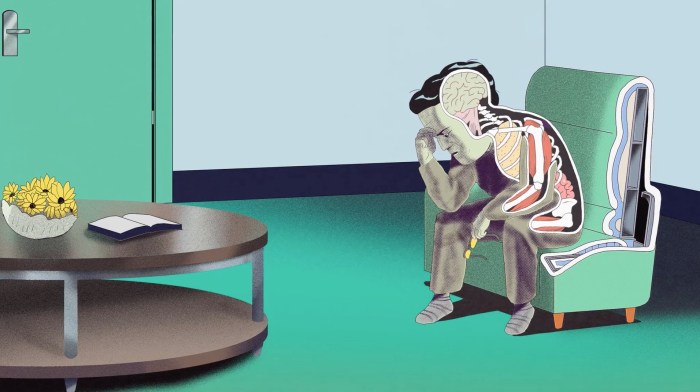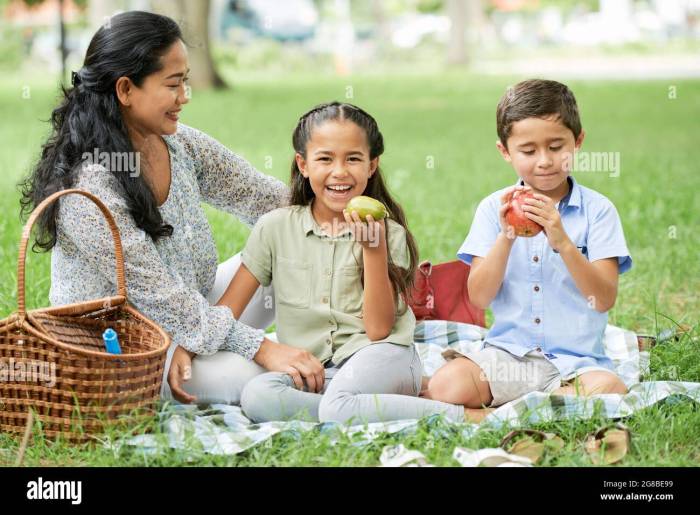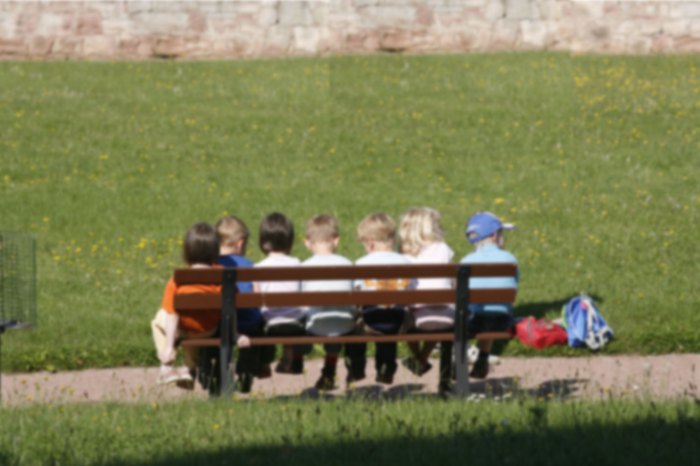Embark on an intriguing journey through the realm of “Lunch on the Grass Crossword,” where art, nature, and recreation intertwine. This multifaceted exploration delves into the captivating painting by Edouard Manet, unravels the secrets of a perfect picnic on the grass, and uncovers the significance of grass in literature, film, and music.
From the controversial origins of Manet’s masterpiece to the tranquil pleasures of a grassy picnic, this discourse offers a rich tapestry of insights and inspiration.
Painting by Edouard Manet

Edouard Manet’s “Le Déjeuner sur l’herbe” (Lunch on the Grass) is a groundbreaking painting that challenged conventional artistic norms and sparked controversy upon its debut in 1863.
Significance in Art History
Manet’s painting is significant for several reasons. Firstly, it broke away from the traditional depiction of mythological or historical scenes by portraying a contemporary setting with ordinary people. Secondly, its realistic style, influenced by the Spanish masters, challenged the prevailing academic style of the time.
The painting’s depiction of a nude woman alongside fully clothed men also challenged societal norms and expectations.
Controversy and Criticism
When “Le Déjeuner sur l’herbe” was first exhibited at the Paris Salon, it was met with widespread criticism. Critics condemned the painting’s lack of idealization, its crude brushwork, and its unconventional subject matter. The nude woman in particular was seen as offensive and immoral, leading to accusations of vulgarity and indecency.
Despite the controversy, the painting’s innovative qualities were recognized by some influential critics, including the writer Émile Zola, who praised its originality and realism.
Picnic on the Grass: Lunch On The Grass Crossword
A picnic on the grass is a delightful way to enjoy the outdoors and share a meal with friends and family. When planning your picnic, it is important to consider the weather, the location, and the activities you will be doing.
You will also need to pack a picnic basket with all the necessary items.
Picnic Foods
When choosing picnic foods, it is important to select items that are easy to transport and will not spoil in the heat. Some good picnic foods include:
- Sandwiches
- Salads
- Fruit
- Cheese and crackers
- Chips and dip
- Cookies
- Brownies
Activities
In addition to eating, there are many other activities you can enjoy at a picnic on the grass. Some popular activities include:
- Playing games
- Reading
- Sunbathing
- People-watching
- Walking
- Biking
Picnic Basket
When packing your picnic basket, be sure to include the following items:
- Food
- Drinks
- Plates
- Napkins
- Utensils
- Blanket
- Sunscreen
- Bug spray
- First-aid kit
Grass Types

Choosing the right type of grass for picnics is essential for a comfortable and enjoyable experience. Different grass types have varying characteristics, such as texture, density, and durability, that make them more or less suitable for this purpose.
Suitable Grass Types for Picnics
- Kentucky Bluegrass:Known for its fine texture, rich green color, and excellent durability, Kentucky bluegrass is a popular choice for picnics. It forms a dense, low-growing turf that can withstand foot traffic and provides a soft, comfortable surface.
- Perennial Ryegrass:This grass type is known for its fast growth, durability, and tolerance to a wide range of conditions. Perennial ryegrass forms a dense, medium-textured turf that is resistant to wear and tear, making it a good option for areas with heavy foot traffic.
- Fine-Leaved Fescue:Fine-leaved fescue is a low-maintenance grass type that is drought-tolerant and requires less mowing. It forms a dense, fine-textured turf that is soft and comfortable to walk on.
Grass Lawn Care and Maintenance for Picnics
To maintain a healthy and inviting grass lawn for picnics, proper care and maintenance are crucial. Here are some essential tips:
- Mowing:Mow the lawn regularly to maintain a desired height and encourage dense growth. Avoid cutting the grass too short, as this can weaken the turf and make it more susceptible to damage.
- Watering:Water the lawn deeply and infrequently, allowing the water to penetrate the soil and reach the roots. Avoid overwatering, as this can lead to disease and root rot.
- Fertilizing:Fertilize the lawn according to the manufacturer’s instructions to provide essential nutrients for healthy growth. Use a balanced fertilizer that contains nitrogen, phosphorus, and potassium.
- Aerating:Aerating the lawn helps improve drainage and reduce soil compaction. This allows water and nutrients to reach the roots more effectively, promoting healthier growth.
By following these tips, you can maintain a beautiful and inviting grass lawn that will provide a comfortable and enjoyable surface for picnics.
Outdoor Recreation

Outdoor recreation on a grass lawn offers a refreshing and rejuvenating experience. It’s an ideal setting for various activities that promote physical and mental well-being.
Schedule for a Day of Outdoor Recreation on the Grass
Plan a day filled with fun and relaxation on the grass. Here’s a sample schedule:
- Morning:Engage in a brisk game of frisbee or soccer to energize the day.
- Afternoon:Spread out a blanket for a delightful picnic lunch, enjoying the fresh air and warm sun.
- Evening:As the sun sets, set up a bonfire and roast marshmallows or hot dogs while sharing stories and laughter.
Safety Tips for Outdoor Recreation on the Grass
Ensure a safe and enjoyable time outdoors by following these safety tips:
- Stay hydrated:Drink plenty of water, especially during warm weather.
- Wear sunscreen:Protect your skin from the sun’s harmful rays.
- Avoid sharp objects:Be cautious of broken glass or other hazards.
- Respect wildlife:Observe animals from a distance and avoid disturbing their habitat.
- Clean up after yourself:Leave the area as you found it, disposing of any trash properly.
Grass in Literature
Grass, a ubiquitous and seemingly unremarkable plant, has captivated the imaginations of poets, authors, and literary figures throughout history. Its humble presence in literature belies a profound symbolism and evocative power.
Grass often represents the cyclical nature of life and the ephemeral nature of existence. Its verdant growth and eventual decay mirror the journey from birth to death and the constant renewal of the natural world. In William Wordsworth’s “Ode: Intimations of Immortality,” grass symbolizes the innocence and wonder of childhood, a state that is gradually lost as we age.
Symbolism of Grass
- Renewal and Growth:Grass’s ability to regenerate and flourish even after being trampled or cut symbolizes resilience, hope, and the indomitable spirit of life.
- Transience and Mortality:The ephemeral nature of grass, its rapid growth and decay, serves as a reminder of the brevity of life and the inevitability of death.
- Simplicity and Humility:Grass’s humble appearance and widespread presence represent the beauty and value found in the ordinary and the overlooked.
- Connection to Nature:Grass is a vital part of ecosystems, providing sustenance and shelter to countless creatures. Its presence in literature often evokes a sense of connection to the natural world.
Imagery and Atmosphere, Lunch on the grass crossword
Grass is a versatile literary device that can be used to create a wide range of images and atmospheres. Its lush green color can evoke a sense of peace and tranquility, while its rustling sound can create an eerie or mysterious atmosphere.
In Emily Dickinson’s poem “Because I could not stop for Death,” grass is used to create a vivid and haunting image of the journey into the afterlife.
Grass in Film
Grass plays a significant role in conveying themes and emotions in films. It is often used to create a sense of atmosphere and place, and to reflect the inner lives of the characters.
The Beauty of Grass
The beauty of grass is often captured through cinematography techniques that emphasize its lushness and texture. Close-up shots of blades of grass, for example, can create a sense of wonder and awe. Slow-motion shots of grass blowing in the wind can convey a sense of peace and tranquility.
Just like solving the “lunch on the grass” crossword puzzle, sometimes you need a little break to clear your mind. That’s where nancy va a esas flores comes in. It’s a great way to relax and unwind while still keeping your brain active.
And who knows, you might even learn something new about art history in the process. So next time you’re feeling stuck on a crossword clue, take a break and check out “lunch on the grass” for some inspiration.
Grass can also be used to create a sense of place. In the film The Lord of the Rings, for example, the rolling green hills of the Shire create a sense of peace and contentment. In contrast, the barren wasteland of Mordor creates a sense of desolation and despair.
The Power of Grass
Grass can also be used to convey themes and emotions. In the film The Shawshank Redemption, for example, the grass that grows in the prison yard represents hope and redemption. In the film The Green Mile, the grass that grows on the execution chamber floor represents the innocence of the condemned prisoners.
Grass can also be used to create a sense of tension and suspense. In the film Jaws, for example, the grass that moves in the water foreshadows the presence of the shark.
Grass in Music

Grass has been a recurring theme in music for centuries, appearing in lyrics, metaphors, and symbols. From folk ballads to modern pop songs, grass evokes a wide range of emotions and associations.
Examples of Grass in Song Lyrics
- “Where the grass grows tall and green”(Traditional folk song, “The Green Grass Grew All Around”)
- “The grass was greener, the sun was brighter”(The Beatles, “Here Comes the Sun”)
- “And the grass grows over me”(Bob Dylan, “Blowin’ in the Wind”)
Grass as a Metaphor or Symbol
In music, grass can symbolize:
- Nature and tranquility:Lush, green grass represents peace, serenity, and the beauty of the natural world.
- Growth and renewal:Grass grows quickly and can withstand adversity, making it a symbol of hope, resilience, and new beginnings.
- Mortality:Grass is often associated with the passing of time and the inevitability of death, as in the phrase “grass grows over graves.”
Emotional Impact of Grass-Related Songs
Songs that mention grass can evoke a variety of emotions, including:
- Nostalgia:Grass can evoke memories of childhood, nature, and simpler times.
- Hope and optimism:Songs about grass growing and new beginnings can inspire feelings of hope and optimism.
- Sadness and loss:Grass can also symbolize the passage of time and the inevitability of death, leading to feelings of sadness and loss.
Essential FAQs
What is the significance of Edouard Manet’s “Le Déjeuner sur l’herbe”?
Manet’s painting caused a scandal when it was first exhibited in 1863 due to its depiction of a nude woman picnicking with two clothed men. It challenged traditional artistic conventions and marked a turning point in the history of art.
What are some tips for planning a successful picnic on the grass?
Choose a scenic spot, pack a variety of foods and drinks, bring a blanket and chairs, and don’t forget sunscreen and insect repellent.
What types of grass are best suited for picnics?
Fine-leaved grasses like fescues and bluegrasses are ideal for picnics as they create a dense, comfortable surface.